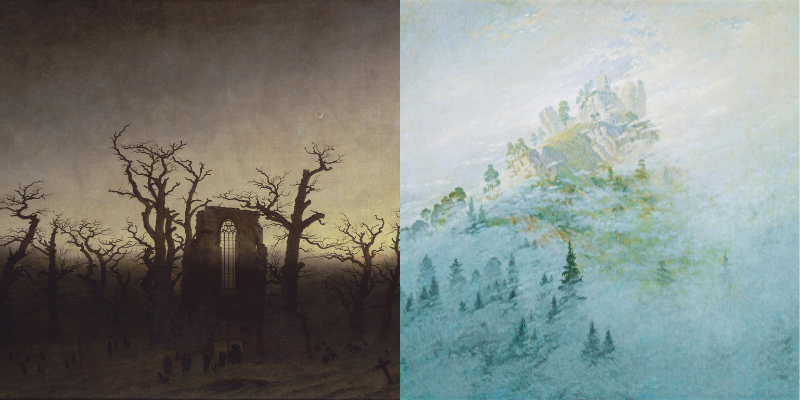German Romantic landscape painter Caspar David Friedrich is regarded as the most important German artist of his time. He lived in the 19th century. His mid-period allegorical landscapes, which frequently depict thoughtful humans silhouetted against night skies, morning mists, sparse trees, or Gothic ruins, are his most well-known works. His main interest was in the contemplation of nature, and his art, which is frequently anti-classical and symbolic, aims to express a personal, emotional reaction to the natural world. According to art historian Christopher John Murray, Friedrich’s paintings frequently depict human figures at a size that “directs the viewer’s gaze towards their metaphysical dimension” in the midst of wide landscapes. Born on this day, September 5th, 1774, we at Abir Pothi gathered 11 most serene paintings by the master of sublimity below:
1. Cross In the Mountains
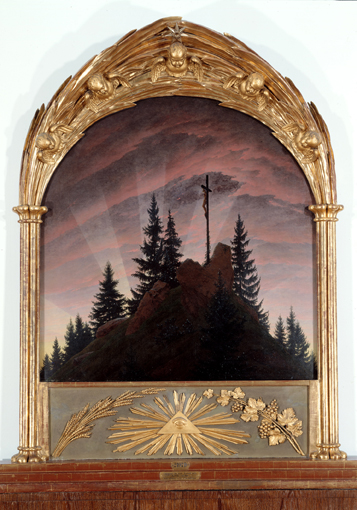
Courtesy Wikipedia
One can see a depiction of a mountainous scene with a crucifix in Caspar David Friedrich’s “Cross in the Mountains,” also known as “The Tetschen Altar,”. It emphasises the spiritual quality of nature. As an unconventional altarpiece, it generated debate but enhanced Friedrich’s reputation.
2. Monk by the Sea
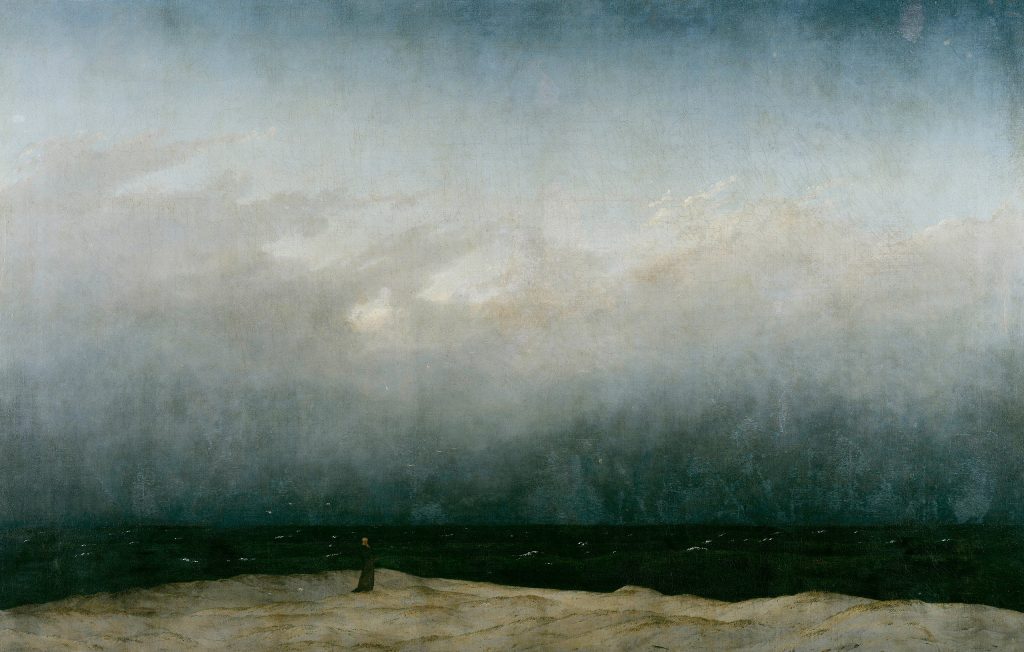
Courtesy: Wikimedia Commons
Friedrich’s well-known painting of a lone monk in a spare landscape launched him in terms of critical acclaim. It placed an emphasis on spiritual reflection over narrative and had an influence on modernist abstraction.
3. Self Portrait
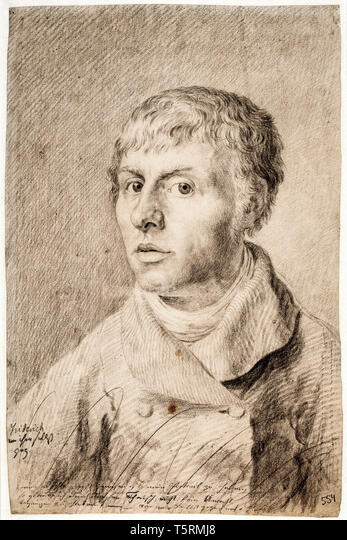
Courtesy: Alamy
Caspar David Friedrich self-portrait as a young man is a peek into the artist’s perception of himself. The art style of the painting follows romanticism wherein the artist used chalk as his medium to bring his portrait to life.
4. Morning
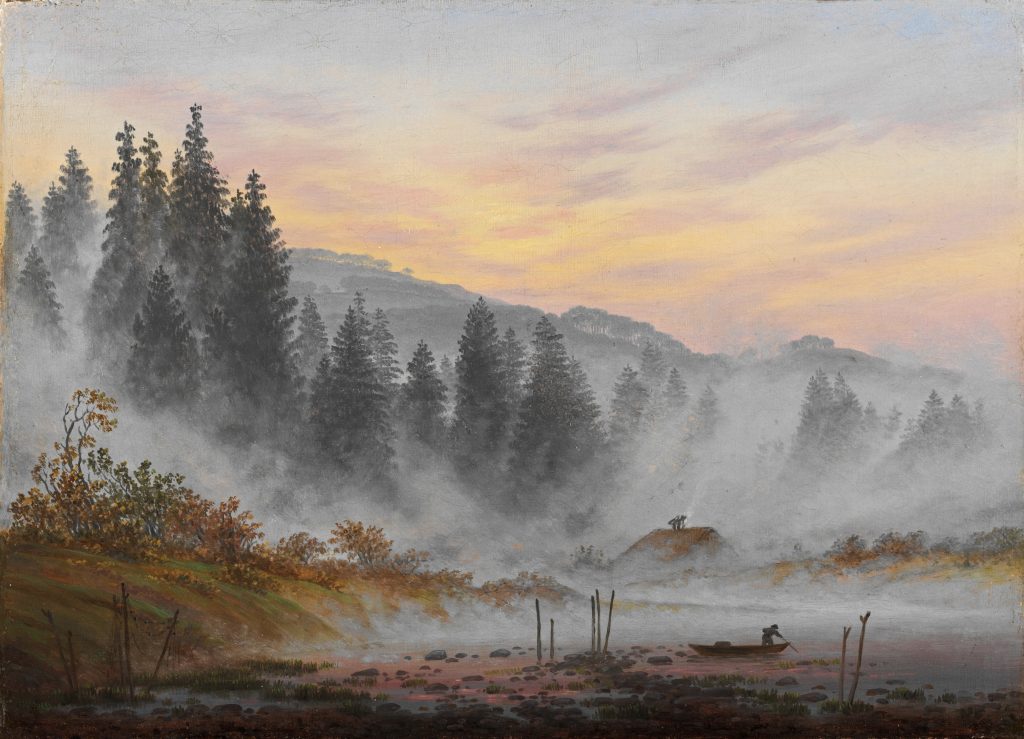
Courtesy: Wikimedia Commons
Caspar David Friedrich revolutionized landscape art by emphasizing sublime moments in nature, employing the Rückenfigur to immerse viewers in the scene, and infusing landscapes with romantic emotions and often religious themes.
5. The Sea of Ice
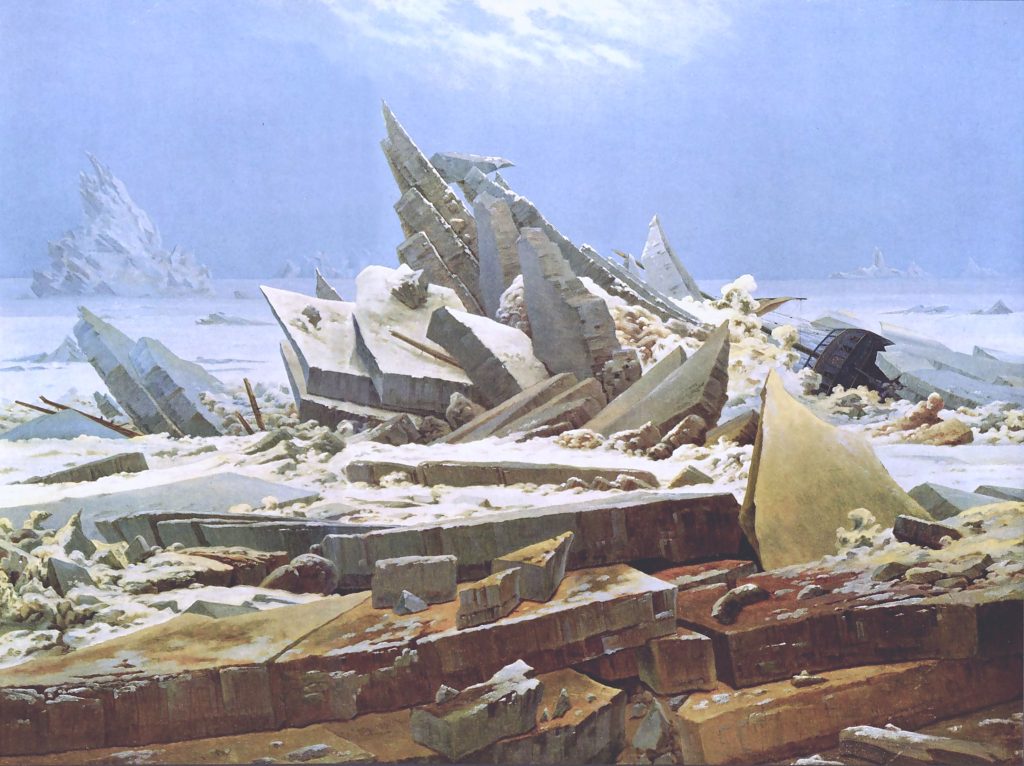
Courtesy: Wikipedia
Diverse interpretations can be made of the shipwreck in this artwork, which is set against icebergs and rocks and a vivid blue sky. It is seen as a political statement that represents a disastrous political period in Germany. The artist’s early trauma of losing his brother in an accident is reflected in this work, which is autobiographical. It conveys Friedrich’s respect for the natural world by highlighting how small humans are in comparison to the forces of nature. It resisted expectations of being picturesque or moralistic, which led to an initial misunderstanding.
6. Wanderer Above a Sea of Fog
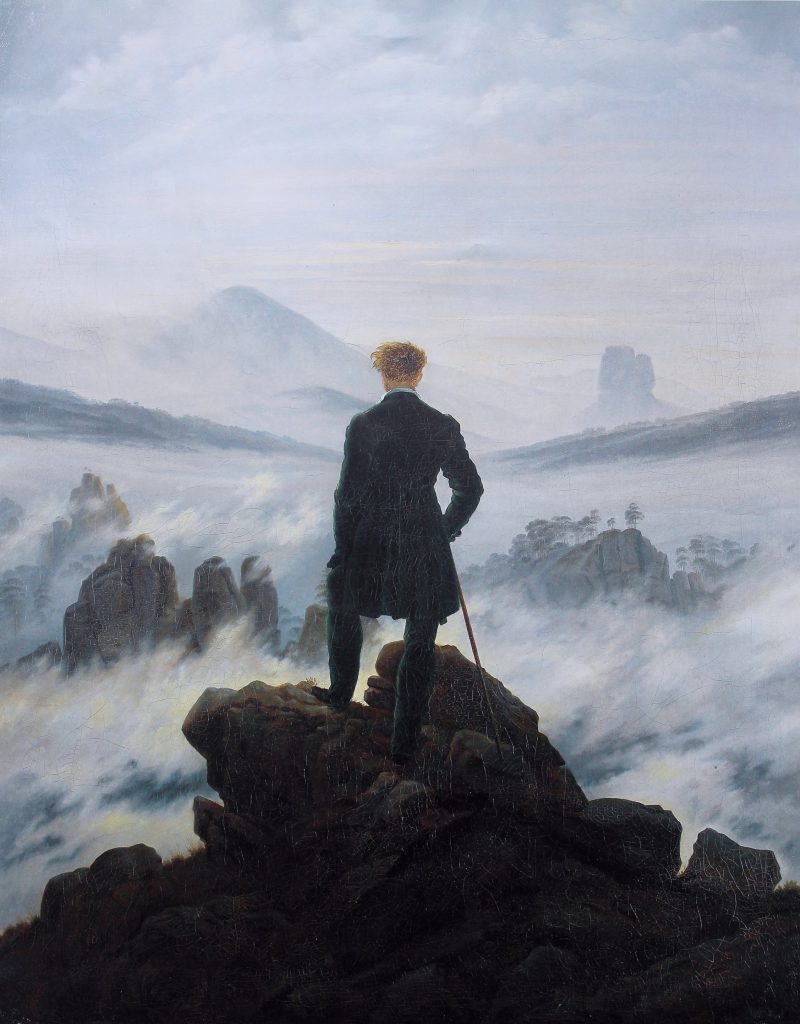
Courtesy: Wikipedia
The image “Wanderer above a Sea of Fog” shows a lone man gazing out at a foggy wilderness, representing the incredible force of nature. Through the figure’s clothing, Friedrich delicately conveys political opposition. Friedrich’s work was later exploited by the Nazis, and it wasn’t until the 1980s that it was given the respect it deserved.
7. Winter Landscape
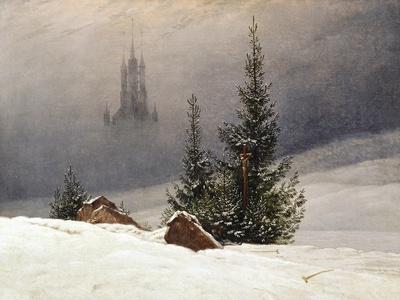
Courtesy Art.com
In this painting by Caspar David Friedrich that the National Gallery purchased in 1987, a man is seen putting down his crutches and kneeling in front of a sparkling crucifix that is surrounded by three fir trees in a wintry environment. A Christian Trinity symbolism is suggested by the presence of a German Gothic cathedral or church in the obscurity. It conveys opposing themes of sorrow and optimism via Christian faith and is said to be a companion piece to another artwork in Schwerin.
8. Abbey in the Oak Forest
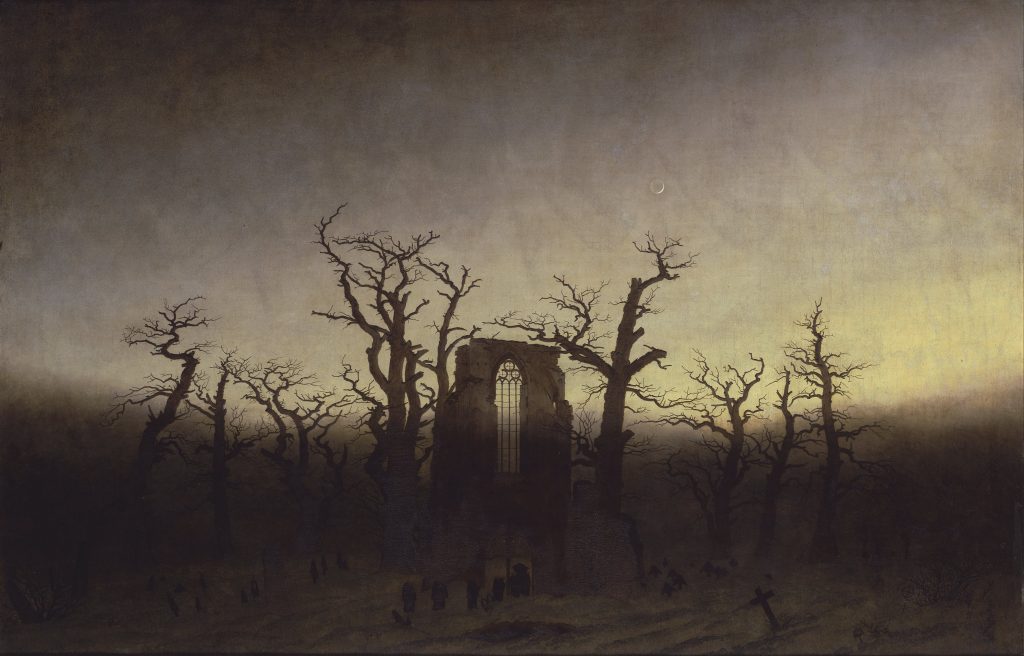
Courtesy: Wikipedia
A Gothic abbey in ruins among bare trees is shown in this picture by Friedrich using muted colours. Through the use of negative space, it evokes a sense of loss and longing as well as nationalistic pride in Germany’s Gothic past. Despite the gloom, the scene conveys regeneration and hope.
9. Morning Mist in the Mountains
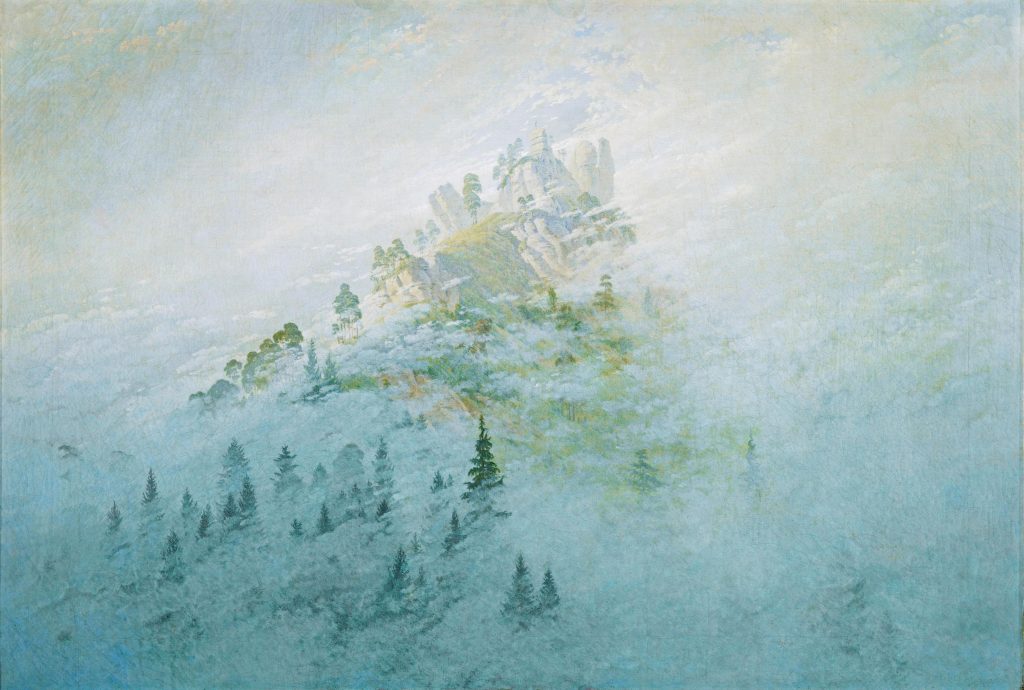
Courtesy: Wikimedia Commons
Romantic notions of nature as a conduit to the divine are embodied in Caspar David Friedrich’s picture of a mountain peak shrouded in mist. The sublime is symbolised by the mist, which makes the surroundings appear enormous and enigmatic and inspires awe. Without overt Christian symbolism, Friedrich’s method introduces a fresh style of religious art through close encounters with the majesty of nature.
10. On the Sailing Boat
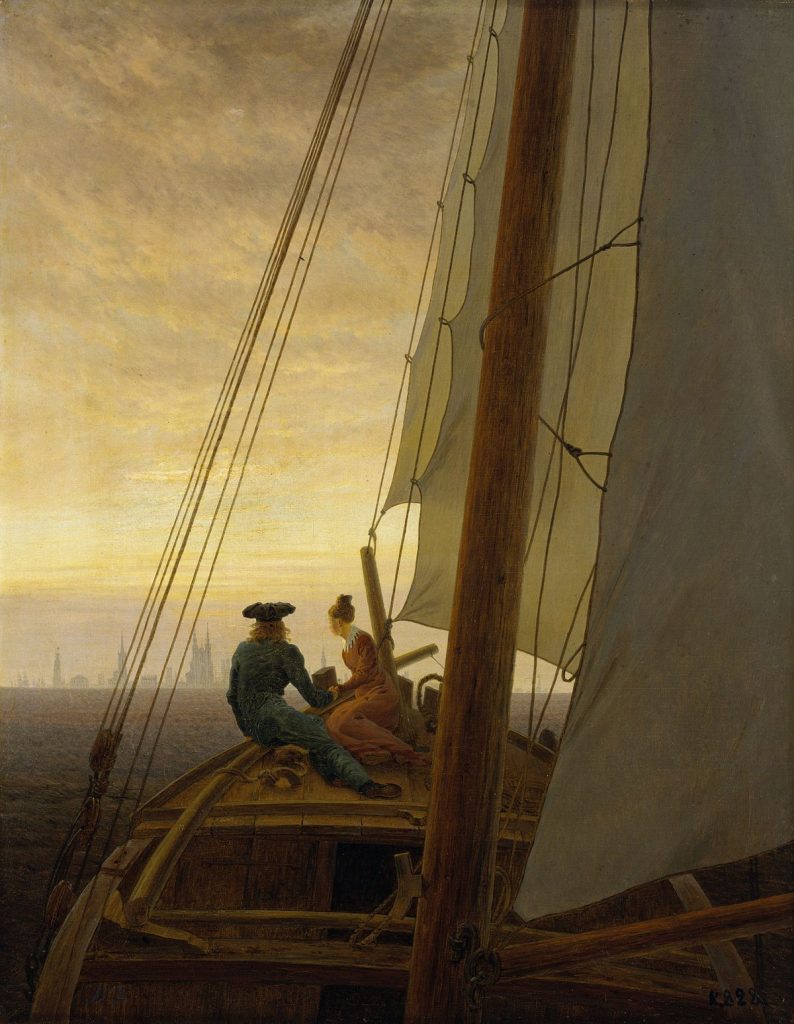
Courtesy: Wikimedia commons
A break from his usual landscapes, Caspar David Friedrich’s “On the Sailing Boat” depicts a ship’s bow with a couple holding hands, maybe the artist and his wife, signifying their union and trip. An imbalanced arrangement challenges traditional proportions and perceptions of scenic landscapes in this experimental design.
11. The Stages of Life
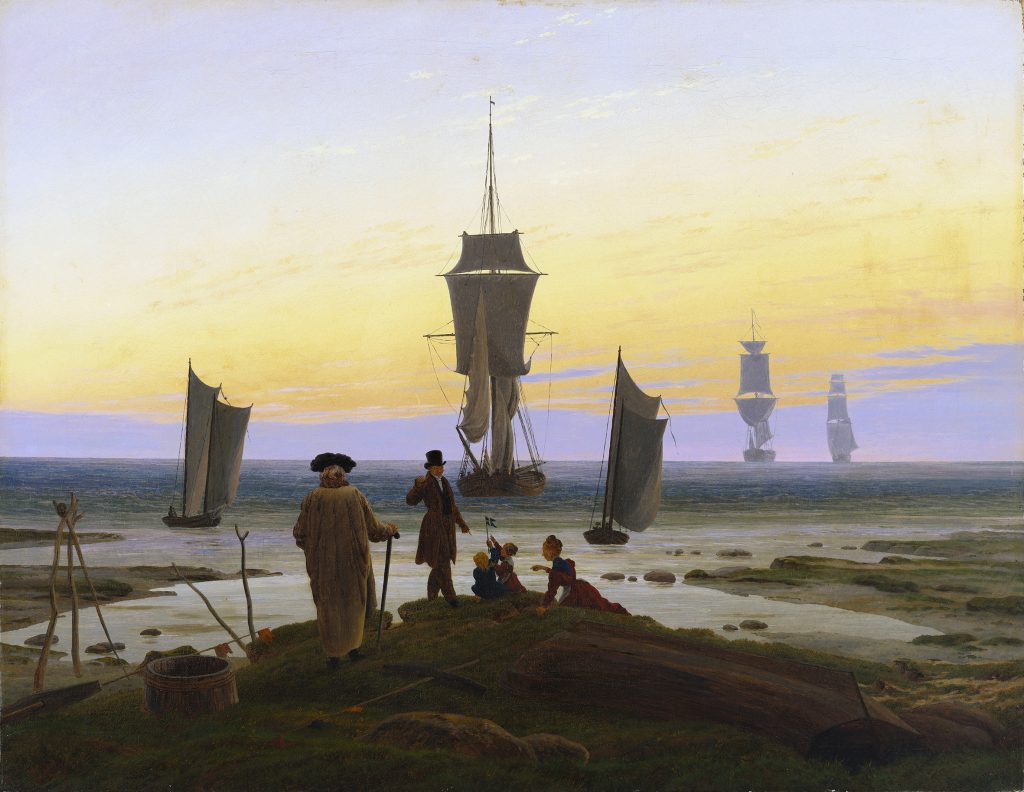
Courtesy Wikipedia
Caspar David Friedrich’s painting “The Stages of Life” depicts five ships sailing towards the horizon while five figures stand on the shore, representing the journey of life. The elderly man, who could be a self-portrait, interacts with individuals who could be members of Friedrich’s family. The shifting sky represents the transition from birth to infinity, and the painting is an allegory for the passage of time and the stages of life. The peaceful sunset evokes feelings of acceptance and completion.
Read Also:
The Banality of Jeff Koons: His Artistic Milestones in 10 pictures.

